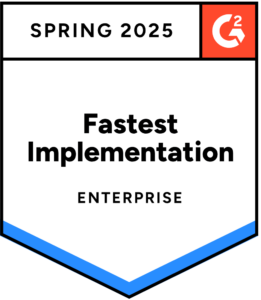What Is Reconciliation in Accounting?
Blog post
Share
Understanding Account Reconciliation
Definition of Reconciliation in Accounting:
Reconciliation is the process of comparing two sets of financial records—typically a company’s general ledger and the company’s bank statements—to ensure both are complete and consistent. Should reconciliation reveal discrepancies, they must be tracked down and reconciled. Businesses typically reconcile their books on a monthly, quarterly or annual basis. Though the more frequently they engage in reconciliation the better.
The Essence of Reconciliation
Businesses rely on the account reconciliation process to ensure the viability of their financial records and the integrity of their accounts, to detect fraud, and to ensure the quality of their accounting. That said, there is more than one method of account reconciliation.
Diverse Methods of Reconciliation
The following are some of the most common forms of reconciliation.
Individual Reconciliation
Individual reconciliation is known to most people as “balancing their checkbook.” It can produce a variety of benefits including helping you avoid overdrafts, calling attention to your own miscalculations, shining a light on bank fees, and helping you budget for the near and long-term.
Business Reconciliation
Business reconciliation is a more complex process, simply because of the amount of money involved and the number and diversity of the parties involved including banks, suppliers and customers.
The Imperative of Regular Reconciliation
For a company to be able to make reliable forecasts, create accurate budgets and satisfy the needs of stakeholders, they must have reliable financial information. This is where reconciliation comes in.
But if you only engage in quarterly or even annual reconciliation, you make it easier for nefarious players to engage in undetected fraud and for systemic errors to create cash flow issues that undermine day-to-day business activities.
For those reasons, monthly reconciliation is recommended. If you do not have the accounting resources to dedicate to manual reconciliation every month, automated reconciliation solutions from Trintech can save vast amounts of time, reduce errors and increase transparency.
The Role of Reconciliation for Businesses
Maintaining accurate financial records can help a business in a variety of important ways, including preventing fraud, ensuring you don’t pay more than your share of tax, helping to secure funding from investors, more accurate budgeting, and maintaining good relationships with suppliers.
When it comes to suppliers, late payments are a sure-fire way to erode trust and damage these key relationships. Frequent reconciliation enables you to always have an accurate account of your finances so you can pay invoices promptly and with a high degree of confidence. Automated reconciliation software can help ensure prompt payments which, in turn, solidifies your status as a reliable customer.
The Mechanics of Account Reconciliation
At its heart, account reconciliation involves comparing information in the general ledger against monthly statements issued by external sources, most often banks. While the precise mechanics of the reconciliation process may vary from company to company, they all more or less follow the same template.
The Reconciliation Process Step-by-Step
When it comes to the reconciliation process most companies follow this general outline.
- Gather the necessary records: This entails bringing together the most recent bank statement along with your company’s general ledger or books. These are the records you will be reconciling.
- Compare deposit records: Compare the bank deposits noted in the ledger with those in the bank statement. All entries in the debit side of the bank column in the ledger should agree with the credit side of the bank statement and vice versa.
- Adjust the bank statement: If there are deposits in transit, outstanding checks, or bank errors they must be accounted for. Adjust the bank balance to reflect these anomalies to harmonize the ledger with the bank statement. Bank errors usually take the form of omitting a deposit or entering the wrong deposit amount. You may need to work with the bank to reconcile these kinds of bank errors.
- Account for interest and fees: Monthly bank charges, NSF check charges, overdraft fees and more all need to be accounted for and deducted from the cash account. Conversely, any interest earned since the last reconciliation must be added to the cash account.
- Compare the adjusted balances: After completing these steps, your general ledger and bank statement should be in agreement. If they are not you will need to repeat the reconciliation process. Books that resist reconciliation may also indicate fraud.
Unravelling the Mysteries of Reconciliation Discrepancies
Discrepancies pop up all the time during the reconciliation process. The following are some of the most common reasons for reconciliation discrepancies.
Probable Reasons for Differences
Timing differences
Oftentimes a company will enter a deposit or payment into their ledger before said payment has cleared with the bank. This usually occurs with payments and deposits made near the end of the month.
For example, a check may have been received on June 30th and recorded in the cash account for June. However, it may not be processed by the bank for several days and will end up appearing on the July bank statement.
Human error
People on both the company and the bank side may make errors when manually entering information. Perhaps someone moved a decimal point by mistake, typed the wrong number or transposed digits. For the record: if the discrepancy is a multiple of 9 chances are good it is a transposition error.
In any month there usually won’t be more than 1 or 2 such mistakes, which is good because they can be difficult to track down.
Missing Transactions
Check printing fees, credit card fees and interest, electronic deposits and more can get lost in the transactional miasma. In many cases, your first awareness of them will come when you see them noted on the bank statement. Fortunately, they are usually easy to spot and correcting them simply entails entering the information into the company books.
Fraud
It is estimated that businesses lose up to 5% of their revenue each year to fraud. A staggering thought when you consider the trillions of dollars in play. Fraud may take many forms including, but not limited to:
- Cash payments that wound up in someone’s pocket instead of the cash drawer.
- Phony checks written to “vendors” that don’t actually exist.
- Theft of inventory or other assets.
- Funds electronically siphoned off into offshore bank accounts.
Automating the reconciliation process can greatly reduce instances of fraud, can help identify fraud faster and can create a clear record of everyone who made ledger entries as well as when and what they entered.
Harnessing Technology: The Future of Reconciliation
In the past few years, accounting procedures, including reconciliation, have undergone revolutionary change. And in reality, this is just the tip of the iceberg. Below we’re going to take a quick look at the future of account reconciliation.
The Edge of Account Reconciliation Software
The way businesses handle account reconciliation is changing by the day. Automation, cloud computing, and above all, AI, are about to alter the reconciliation landscape. Let’s take a closer look at how.
The impact of AI and Machine Learning
Even under the best of circumstances, reconciliation can be a tedious process that tests the patience of the most seasoned accountant. And it’s not as if those accountants are spending all their time chasing down discrepancies either. In fact, industry research indicates that more than 90% of the time and effort that goes into reconciliation is spent on entries that already match.
AI enables you to handle all of your matching entries in seconds, rather than hours (or even days depending on the size of the business), and then identifies and presents discrepancies to you for further investigation. AI memorizes the rules and recalls them next time around. And because AI and machine learning represent the cutting edge of dynamic computing, any changes to laws, regulations or processes can be incorporated in a flash.
Real-time Reconciliation
Real-time reconciliation has been the holy grail of accounting for several years and with each passing month becomes more feasible. In short order, real-time reconciliation will eliminate virtually all manual errors while allowing you to redeploy your accountants to more value-orientated work.
Streamlining Reconciliation with Cloud-Based Solutions
Web designers, streaming services, social media companies and yes, accounting in general and reconciliation in particular are all moving to the cloud. The advantages of cloud-based accounting are many and include scalability, accessibility and enhanced data security. Not to mention all the money you’ll save.
Enhancing Security and Compliance with Software
It’s inevitable that the future of reconciliation will see the development of ever more advanced security features as the quest to root out opportunities for fraud continues. In addition, accounting software will provide more sophisticated and dependable compliance tools, many of them driven by AI and machine learning.
Conclusion
Regular, accurate account reconciliation is essential if a business is to reduce fraud, attract investors, mollify stakeholders, and implement the business plan. Trintech’s portfolio of reconciliation and financial close sol- and large-size businesses to streamline the reconciliation process, all but eliminate manual double-entry accounting, free up accounting resources, assess financial risks, and enhance transparency.
Learn more in our Finance & Accounting Glossary








